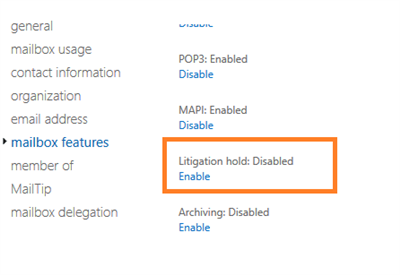Litigation Hold and In-Place Hold
Aralık 15, 2015
There are two types of holds available in Exchange 2016: Litigation Hold and In-Place Hold. Litigation Hold uses the LitigationHoldEnabled property of a mailbox. When Litigation Hold is enabled, all mailbox all items are placed on hold. In contrast, you can use an In-Place Hold to preserve only those items that meet that the criteria of a search query that you define by using the In-Place eDiscovery tool. You can place multiple In-Place Holds on a mailbox, but Litigation Hold is either enabled or disabled for a mailbox. For both types of holds, you can also specify the duration period to hold items. The duration is calculated from the date a mailbox item is received or created. If a duration isn’t set, items are held indefinitely or until the hold is removed.

When a mailbox is placed on one or more In-Place Holds at the same time, all items are held indefinitely or until the holds are removed. If you remove the Litigation Hold from a mailbox, but user is still placed on one or more In-Place Holds, items matching the In-Place Hold criteria are held for the period specified in the hold settings. When you move a mailbox that’s on Litigation Hold in Exchange 2010 or Exchange 2013 to a Mailbox server in Exchange 2016, the Litigation Hold setting continues to apply, ensuring that compliance requirements are met during and after the move.
For more information when to use each type of hold, see Place all mailboxes on hold.